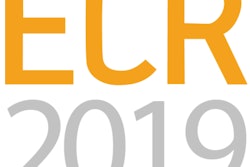
An artificial intelligence (AI) algorithm can reduce dosing levels for chemotherapy and radiotherapy for glioblastoma without affecting the effectiveness of the treatments, according to a study being presented this week at the 2018 Machine Learning for Healthcare conference at Stanford University.
Researchers led by Gregory Yauney of the Massachusetts Institute of Technology (MIT) Media Lab created a machine-learning model that identifies an optimal treatment plan after reviewing treatment regimens currently in use. In simulated trials on 50 patients, the algorithm was able to decrease dose from 25% to 50% in nearly all treatments while retaining the same tumor-shrinking potential.
They trained their algorithm on 50 simulated patients randomly selected from a large database of glioblastoma patients who had previously received traditional treatments. The model conducted about 20,000 trial-and-error test runs on each patient to learn parameters for optimal regimens. These parameters were then used to formulate new regimens based on various constraints for new patients, according to the researchers.
Notably, the algorithm was developed using reinforced learning, a machine-learning technique in which a model learns to favor certain behavior that leads to a desired outcome, they said.
In this approach, artificially intelligent "agents" complete actions to reach a desired outcome. These agents receive a "reward" or "penalty" depending on whether or not the action works toward the outcome, and they adjust actions accordingly to achieve that outcome. Based on reward and penalty values, the agent is essentially trying to numerically optimize all actions to get a maximum outcome score for a given task, according to the researchers.
For this glioblastoma planning application, the MIT model was penalized for administering treatment at full doses, encouraging it to choose, if possible, lower doses that would still be effective for shrinking tumors.
After training, the model was tested on 50 new simulated patients and compared with results from a conventional regimen using both temozolomide (TMZ) and procarbazine, lomustine, and vincristine (PVC). When the model was given no dosage penalty, it designed nearly identical regimens to human experts, according to the researchers. Given small and large dosing penalties, however, it substantially cut the doses' frequency and potency while reducing tumor sizes.
The researchers noted that the model was designed to treat each patient individually.
"That was the most exciting part of this work, where we are able to generate precision medicine-based treatments by conducting one-person trials using unorthodox machine-learning architectures," said senior author Pratik Shah, PhD, of the MIT Media Lab in a statement.




















